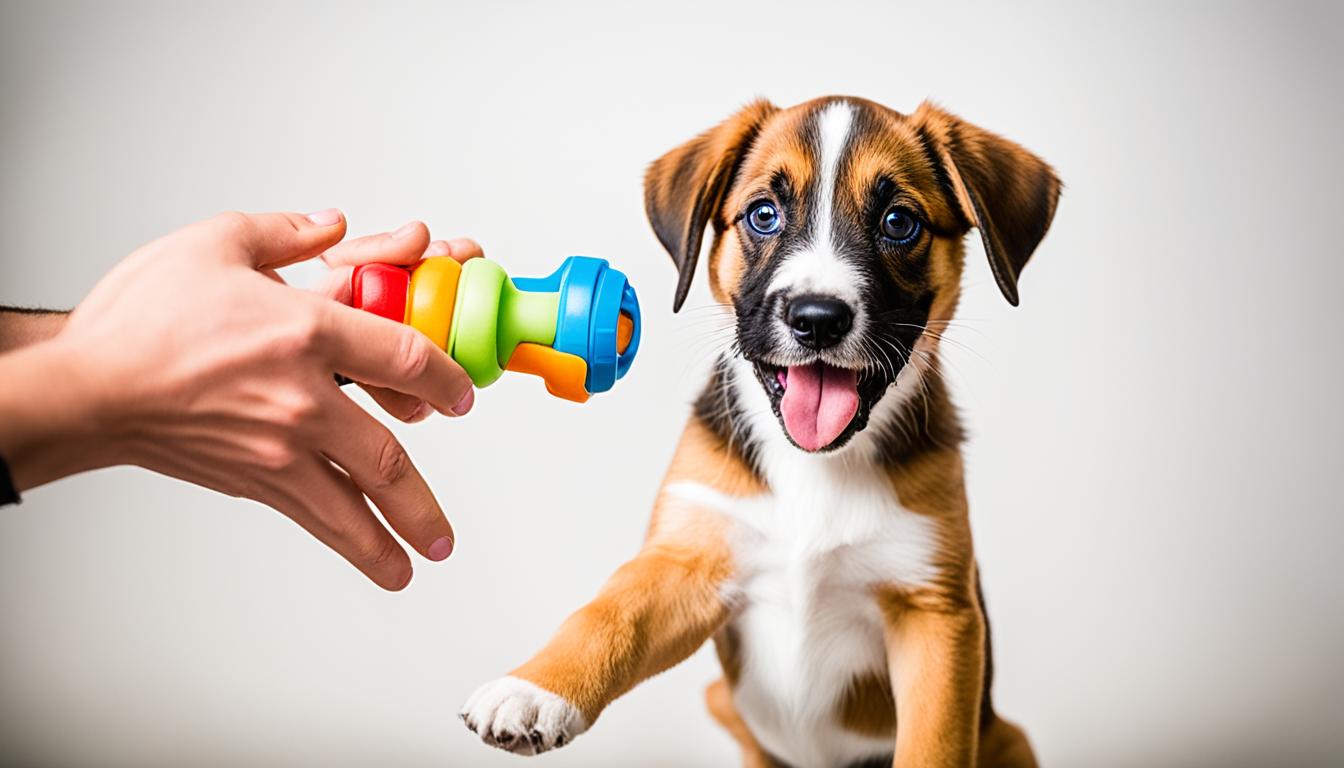Chewing and mouthing are normal dog behaviours, but it’s important to teach puppies what they can and can’t chew on. Puppies use their mouths to explore the world and play, but they may start chewing on inappropriate things, which can be dangerous. If you’re wondering how to stop puppy biting, we have some helpful training tips and puppy mouthing solutions for you.
Why Do Dogs Chew Things?
Dogs and puppies have a natural instinct to chew. It is their way of exploring the world and relieving boredom or anxiety. Teething is another common reason why puppies chew on things, as it helps soothe their sore gums. Teething usually occurs until puppies are around seven months old. However, it’s important to note that puppies don’t know what they’re doing is wrong, and they need guidance to understand what they can and cannot chew on.
Chewing feels good to puppies, so they may turn to inappropriate items such as shoes, furniture, or household objects. This behavior can not only damage your belongings but also pose a danger to them if they ingest something harmful.
To help redirect your puppy’s chewing behavior, it is essential to provide them with appropriate chew toys and bones. These toys are designed to satisfy their natural urge to chew while protecting your belongings. Additionally, engaging your puppy in regular exercise, playtime, and mental stimulation can help prevent boredom, anxiety, and excessive chewing.
Puppy Teething Issues
Teething is a natural process that puppies go through as their adult teeth grow in and replace their baby teeth. During this time, puppies may experience discomfort and soreness in their gums, leading them to chew on objects to alleviate the pain. It’s crucial to understand that teething is temporary and will eventually subside as their adult teeth fully develop.
Puppy Chewing Behavior
Puppy chewing behavior is driven by various factors, including natural instincts, teething, boredom, and anxiety. It is important to differentiate between appropriate and inappropriate chewing behaviors. Providing appropriate chew toys and bones, along with proper training and supervision, can help guide your puppy towards desirable chewing habits. Redirecting their attention when they start chewing on inappropriate items and positively reinforcing good behavior can also aid in curbing excessive chewing.
Understanding the reasons behind why dogs chew things is a crucial step in effectively managing and redirecting their chewing behavior. By ensuring they have suitable alternatives and providing proper guidance, you can help your dog develop healthy chewing habits and protect your belongings.
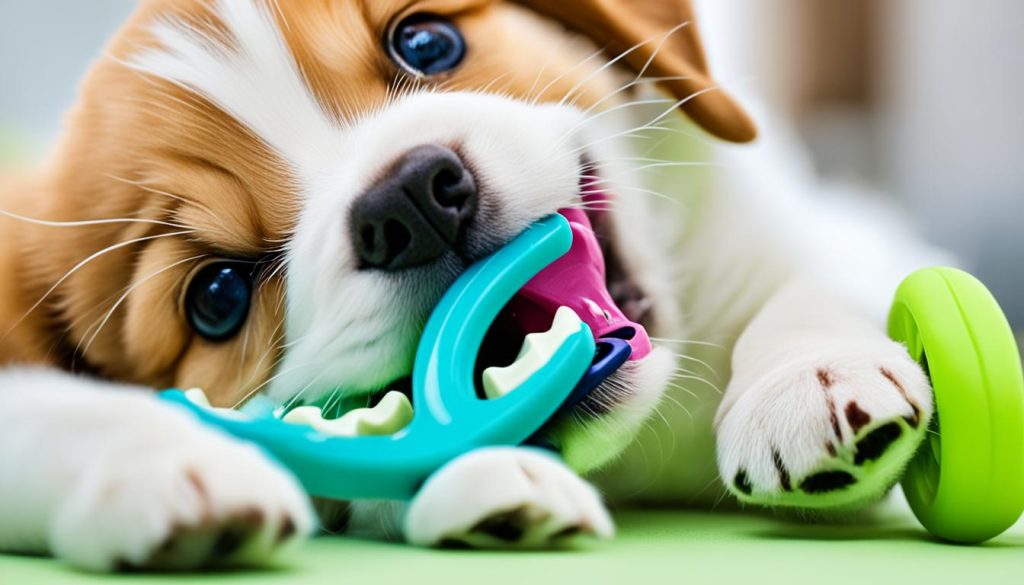
How to Stop Puppy Biting?
Are you struggling with a puppy who loves to chew and mouth everything in sight? Don’t worry, with the right training techniques, you can effectively curb this behavior. Here are seven practical steps to help stop your puppy from chewing and mouthing things they shouldn’t:
- Puppy-proof the living space: Remove any prized possessions or put them out of reach, ensuring your puppy doesn’t have access to items they shouldn’t chew on.
- Restrict access: Use child gates or a playpen to confine your puppy to a safe area where they can’t chew on inappropriate items.
- Provide suitable toys and chews: Offer your puppy a variety of toys and chews that are specifically designed for chewing. Swap them daily to keep your puppy interested.
- Recognize playtime signs: Learn to identify the signs when your puppy is getting ready to play and provide them with a toy before they start chewing or mouthing at you.
- Avoid rough wrestling games: Steer clear of games that involve biting or rough play. If your puppy starts biting during play, immediately stop the game.
- Provide exercise and mental stimulation: Ensure your puppy gets enough physical exercise, mental stimulation, and socialization to prevent boredom and excess chewing behavior.
- Ensure adequate rest: Puppies need plenty of rest to avoid becoming overtired, which can lead to increased chewing and mouthing. Create a quiet and comfortable resting area for your puppy.
By following these steps consistently, you’ll be able to teach your puppy appropriate chewing behavior and prevent unwanted mouthing. Remember, patience and consistency are key in puppy chew training.
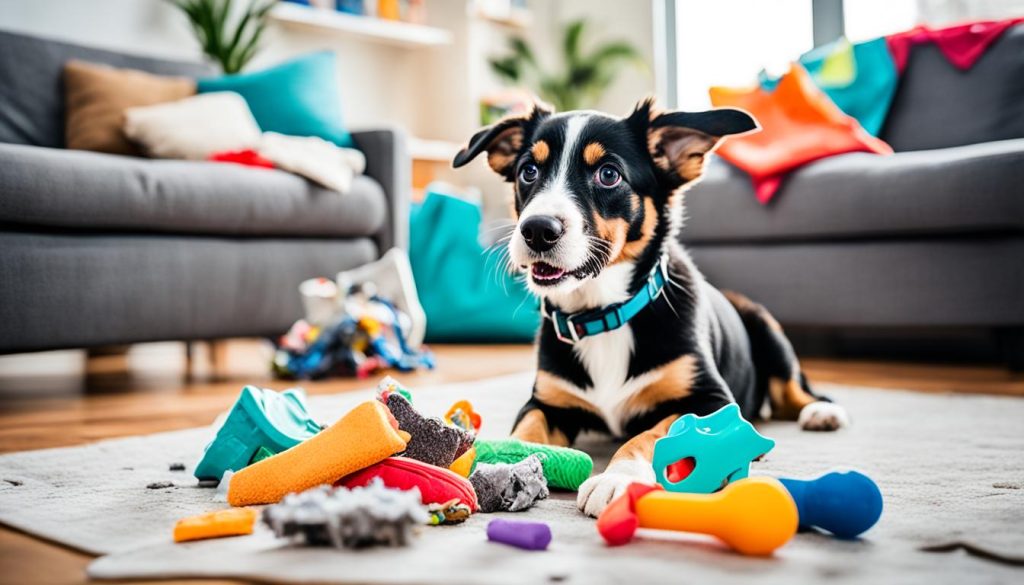
Tips for Choosing Suitable Toys and Chews
When providing toys and chews for your puppy, it’s important to choose ones that are safe and suitable for their size and age. Here are some tips:
- Look for toys specifically designed for puppies, as they are more durable and safer for them to chew on.
- Avoid toys with small parts or loose threads that could be swallowed or cause choking hazards.
- Choose toys made of non-toxic materials.
- Consider puzzle toys or treat-dispensing toys to keep your puppy entertained and mentally stimulated.
- Provide a variety of textures and shapes to keep your puppy interested and satisfy their chewing needs.
By selecting the right toys and chews, you’ll be able to redirect your puppy’s chewing behavior to appropriate items and promote healthy teeth and gums.
Teaching Bite Inhibition
Bite inhibition is a vital skill for dogs to learn as it helps them control the force of their mouthing. Typically, puppies learn bite inhibition during play with their littermates. However, they can also learn it from humans through consistent training and reinforcement. The goal is to teach puppies that biting too hard is not acceptable behavior.
If a puppy accidentally bites too hard during play, their playmate will usually yelp and stop playing. This helps the puppy recognize that their biting was too forceful. When interacting with a puppy, if they bite too hard, yelping in a high-pitched voice can startle them and cause them to stop mouthing. This mimics a natural response that puppies experience during play with their littermates.
Here are some techniques to reinforce proper bite inhibition:
- Time-outs: If the puppy continues to bite despite the yelping, it may be necessary to remove attention and place them in a designated time-out area. This teaches them that biting results in a loss of interaction and playtime.
- Redirecting attention: When the puppy starts biting during play, redirect their attention to an appropriate toy or chew. This teaches them that toys are for biting and mouthing, not human hands or clothing.
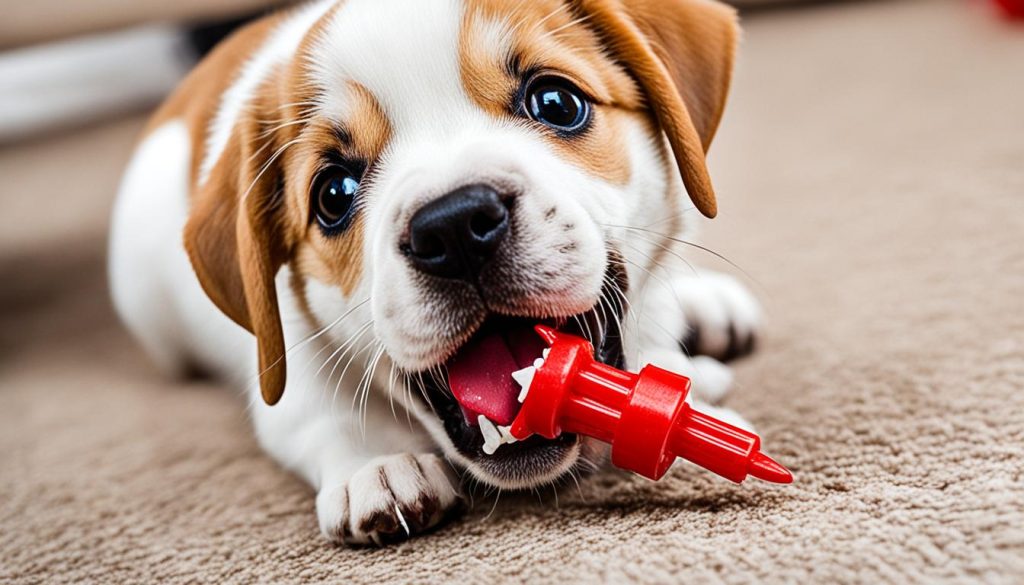
Remember, teaching bite inhibition requires patience and consistency. It may take time for the puppy to learn the appropriate level of force when mouthing. Reinforce positive behaviour by praising and rewarding the puppy when they display gentle mouthing or choose to play with toys instead of biting. In time, the puppy will develop the necessary skills to control their biting and mouthing behaviour.
Redirecting and Reinforcing Positive Behavior
When it comes to training a puppy to stop biting, it’s essential to use techniques that redirect their behavior and reinforce positive actions. It’s crucial to remember that physical punishment or hitting the puppy should never be used, as it can lead to fear and aggression.
Instead, one effective method is to teach the puppy that biting means “game over.” By immediately stopping play when they bite, you’re showing them that biting is not acceptable behavior. This consistency helps them understand the consequences of their actions.
To redirect their attention away from biting fingers or toes, offer the puppy a toy or chew bone as an alternative. This gives them something appropriate to chew on and satisfies their need to explore with their mouth.
Encouraging non-contact forms of play, such as fetch or tug-of-war, can also help deter biting. These types of play engage the puppy’s mind and body without involving direct contact that could lead to biting behaviors.
Providing plenty of interesting and new toys, as well as opportunities for the puppy to play with other puppies and friendly adult dogs, is crucial. Socializing with other dogs teaches them appropriate social behaviors and helps prevent excess biting.
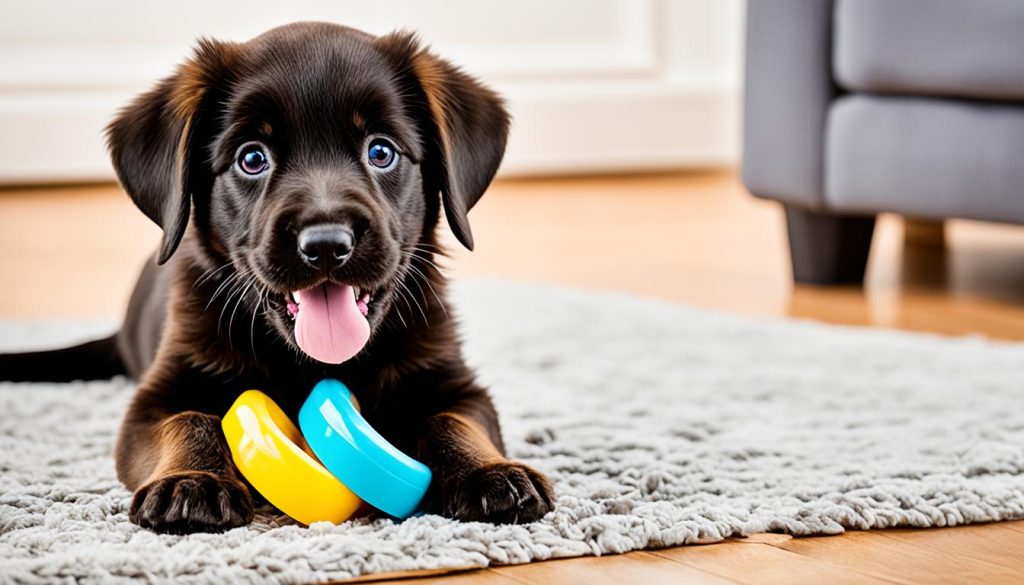
For stubborn cases of biting, using a time-out procedure or a taste deterrent spray can be effective. A time-out gives the puppy a break from playtime when they engage in biting behavior, reinforcing that biting leads to the end of fun interactions. Taste deterrent sprays, which have a bitter taste, can discourage them from biting by making the objects they bite taste unpleasant.
Reinforcing desired behaviors through positive reinforcement is crucial in teaching the puppy what is acceptable. Praise and treats can be used to reward the puppy when they choose not to bite. This helps them make the connection between their actions and positive outcomes.
Conclusion
Puppy biting is a natural behavior that can be managed and redirected through effective training techniques. It’s important to teach puppies to bite gently and redirect their biting behavior to appropriate toys and chews. One key technique is teaching bite inhibition, which helps puppies understand how to control the force of their mouthing.
Providing alternatives to biting, such as offering a toy or chew bone, helps redirect the puppy’s attention away from biting on fingers or toes. It’s crucial to be patient and consistent in reinforcing positive behavior and avoiding physical punishment, as this can cause fear and aggression in puppies.
Enrolling in puppy training classes is highly recommended, as they can provide additional guidance and support in managing and training a biting puppy. With time, training, and the right techniques, puppies can learn to control their biting behavior and grow into well-behaved adult dogs.

